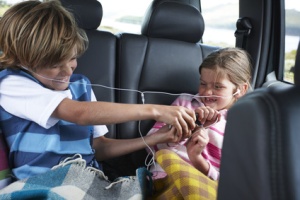The game that I’m going to describe can be a complete game-changer if you play it often enough – both for you and for any child you play it with. It’s really the game of life as it is supposed to be played, and it really harnesses the power of a child’s mind (and yours too). It’s not a traditional kind of a game where there’s a winner, but if the idea of a game where there’s no winner leaves you cold, then perhaps you can make the winner the person who’s judged to have best found the extraordinary amidst the seemingly ‘ordinary’.
So here goes. The rules. Because you probably want rules, right? Well there’s really only one in this game, and it’s that we’re just describing what we notice rather than making things up.
Before you begin. Assemble whoever is playing – it may be just you and a child or you and a whole classroom of children. Drop anchor. By this I mean invite everyone present to move their attention down into their body, perhaps noticing the contact between any parts of the body and the floor. Spend a few moments noticing the movement of the breath in and out of the body. You’ve now moved into a more experiential mode of being, and so you’re ready to begin.
Take turns describing. Each person takes a turn to describe why this moment is a special moment. Each person starts by saying, “This is no ordinary moment because I’m noticing…” and then proceeds to describe in glorious detail whatever they’re noticing. An example may be helpful here, and is part of my experience right now:
This is no ordinary moment because I’m noticing the branches of a tree moving out of the corner of my eye. As I turn my head towards it, I’m noticing how the light is reflecting off the shiny surface of the leaves and some raindrops falling between the leaves each time a breeze moves the branches. I notice a moment of feeling thankful for this tree outside of my window because it’s so beautiful, and this thankful feeling right now feels like a lightness in my chest and I notice that I’m smiling a little.
You may be thinking, “Ah, but I have no tree handy”. Fear not, you’re having an experience, right? Here is another example, so you get the picture and see (hopefully) that there really aren’t any ordinary moments. The extraordinary is to be found everywhere!
This is no ordinary moment because I’m noticing the sensations in my back right now as my body moves a little to keep me balanced. I’m noticing how my chest moves outwards as I breathe in, and how I can feel the soft fabric of my top moves slightly against my shoulders as I breathe. I’m noticing some strands of hair touching my face very lightly, and it tickles slightly.
Keep taking turns, getting more and more detailed in your quality of noticing, until the child cues that they’ve had enough – trying to continue past that point will most likely result in not wanting to play the game again. You might want to start the game by noticing the big things, i.e. a really broad awareness of the whole environment, and then start to home in more and more on the little things. This is so helpful in teaching children focusing skills, and the ability to move between broad awareness and narrow focus.
The idea for this game was inspired by this YouTube video clip of part of the wonderful Peaceful Warrior movie by Dan Millman. The idea that, “There’s never nothing going on” is incredibly powerful, and what this game aims to teach. I’d love to hear how you get on with it!
Wishing you so much joy and happiness on your journey.
Heather x






 Summer Holiday Survival Guide I shall start to set the scene for a really joyful summer holiday – the kind that you and your kids will remember forever, for all of the right reasons – but first we need to pay some attention to the piggy bank. As the summer holiday wears on, your energy and enthusiasm for dealing with bickering and boredom may wane a little. The piggy bank, as I see it, reflects our inner resources; our inner well of wellbeing. As parents, friends, siblings, daughters and sons, we find ourselves trying to tend to other people’s piggy banks, but seldom our own. Tending to our own is like coming back to the centre of the court after every shot during a game of tennis. We’re ready for whatever life throws at us next.
Summer Holiday Survival Guide I shall start to set the scene for a really joyful summer holiday – the kind that you and your kids will remember forever, for all of the right reasons – but first we need to pay some attention to the piggy bank. As the summer holiday wears on, your energy and enthusiasm for dealing with bickering and boredom may wane a little. The piggy bank, as I see it, reflects our inner resources; our inner well of wellbeing. As parents, friends, siblings, daughters and sons, we find ourselves trying to tend to other people’s piggy banks, but seldom our own. Tending to our own is like coming back to the centre of the court after every shot during a game of tennis. We’re ready for whatever life throws at us next. th your child; for example, they’re tired and upset and don’t want to go to bed even though it’s bedtime, and you’ve had a long, tiring day, and you just want bedtime to go smoothly so that you can finally put your feet up. One parent who I shared this method with loved it so much that she had it tattooed on her arm so that she would always remember to bring mindfulness to a difficult moment. The steps are as follows:
th your child; for example, they’re tired and upset and don’t want to go to bed even though it’s bedtime, and you’ve had a long, tiring day, and you just want bedtime to go smoothly so that you can finally put your feet up. One parent who I shared this method with loved it so much that she had it tattooed on her arm so that she would always remember to bring mindfulness to a difficult moment. The steps are as follows:
 complete equanimity even while little Johnny puts a solitaire counter up his sister’s nose because she annoyed him and he wants to see how far it can go? Probably not. There will be moments, particularly during a long trip, that will get emotions rising, and so in this section of my Summer Holiday Survival Guide I’m aiming to share some tips that will hopefully help you to cope with a long trip with your child(ren). The ideas here are not just centred around mindfulness – I’ve aimed to make this a really practical bunch of suggestions, because you want practical stuff rather than me just telling you to breathe, right? Although breathing’s good, don’t forget to do that.
complete equanimity even while little Johnny puts a solitaire counter up his sister’s nose because she annoyed him and he wants to see how far it can go? Probably not. There will be moments, particularly during a long trip, that will get emotions rising, and so in this section of my Summer Holiday Survival Guide I’m aiming to share some tips that will hopefully help you to cope with a long trip with your child(ren). The ideas here are not just centred around mindfulness – I’ve aimed to make this a really practical bunch of suggestions, because you want practical stuff rather than me just telling you to breathe, right? Although breathing’s good, don’t forget to do that.


 us, rather than the habitually trodden path of reactivity.
us, rather than the habitually trodden path of reactivity.
